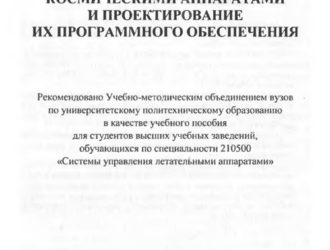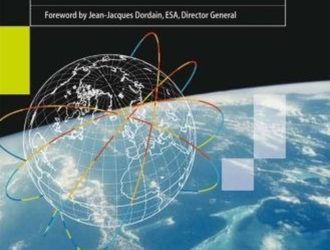 27.12.2019
27.12.2019
Книги
 27.12.2019
27.12.2019
 27.12.2019
27.12.2019
Влияние космического вакуума на материалы и устройства научной аппаратуры.
Далее 27.12.2019
27.12.2019
Возвращение из космоса.
Далее 27.12.2019
27.12.2019
Воздействие твердых частиц естественного и искусственного происхождения на космические аппараты.
Далее 27.12.2019
27.12.2019
Возможности Российских космических средств ДЗЗПрезентация
Далее 27.12.2019
27.12.2019
Вход в атмосферу космических летательных аппаратов.
Далее 27.12.2019
27.12.2019
Геодезическое использование искусственных спутников Земли.
Далее 27.12.2019
27.12.2019
Геоинформационный анализ данных дистанционного зондирования
Далее 27.12.2019
27.12.2019
Глобальные системы позицирования
Далее 27.12.2019
27.12.2019
Бортовые энергосистемы космических аппаратов на основе солнечных и химических батарей
Далее 27.12.2019
27.12.2019
Автономное определение орбиты на борту космического аппарата
Далее 27.12.2019
27.12.2019
Алгоритмы управления геостационарным космическим аппаратом с неполным вектором измерений, например, без использования измерительной информации об угловых скоростях
Далее 27.12.2019
27.12.2019
Алгоритмы управления космическим аппаратом при входе в атмосферу
Далее 27.12.2019
27.12.2019
Атмосфера и управление движением летательных аппаратов
Далее 27.12.2019
27.12.2019
Аэродинамика орбитальных космических аппаратов
Далее 27.12.2019
27.12.2019
Аэрокосмические методы географических исследований
Далее 27.12.2019
27.12.2019
Аерокосмічні спостереження в інтересах сталого розвитку і безпеки GEO-UA.
Далее 27.12.2019
27.12.2019
Баллистика и навигация космических аппаратов
Далее 27.12.2019
27.12.2019
Бортовые комплексы управления космическими аппаратами и проектирование их программного обеспечения.
Далее 27.12.2019
27.12.2019
Автоматические космические аппараты
Далее 27.12.2019
27.12.2019
Автоматические разведчики космоса
Далее 27.12.2019
27.12.2019
Автономная навигация космических аппаратов
Далее 27.12.2019
27.12.2019
Автономная навигация космических аппаратов при помощи спутниковых радионавигационных систем
Далее 27.12.2019
27.12.2019
Автоматизированные системы управления космическим полетом
Далее 27.12.2019
27.12.2019
Spies in the Sky: Surveillance Satellites in War and Peace
Далее 27.12.2019
27.12.2019
Variational Analysis and Aerospace Engineering
Далее 27.12.2019
27.12.2019
Image Processing for Remote Sensing
Далее 27.12.2019
27.12.2019
Introduction to Remote Sensing
Далее 27.12.2019
27.12.2019
Novel materials and Technologies for Space Rockets and Space Development, volume 3
Далее 27.12.2019
27.12.2019
Satellites: Orbits and Missions
Далее 27.12.2019
27.12.2019
Satellite Positioning: Methods, Models and Applications
Далее 27.12.2019
27.12.2019
Satellite Technology: Principles and Applications
Далее 27.12.2019
27.12.2019
Spacecraft Power Technologies
Далее 27.12.2019
27.12.2019
Spacecraft Structures
Далее 27.12.2019
27.12.2019
Space Vehicle Design /
Далее 27.12.2019
27.12.2019
Communication Satellite Antennas System Architecture, Technology and Evaluation
Далее 27.12.2019
27.12.2019
Earth As Art
Далее 27.12.2019
27.12.2019
How Spacecraft FlySpaceflight Without Formulae
Далее 20.09.2019
20.09.2019
Celebrating 30 Years of the Space Shuttle Program
The Space Shuttle fleet set high marks of achievement and endurance through 30 years of missions, from its first, when STS-1 launched on April 12, 1981, to its last, when STS-135 landed on July 21, 2011....
Далее 20.09.2019
20.09.2019
A Researcher’s Guide to: Technology Demonstration
The mission of the International Space Station (ISS) Program is to advance science and technology research, expand human knowledge, inspire and educate the next generation, foster the commercial development of...
Далее 20.09.2019
20.09.2019
A Researcher’s Guide to: Space Environmental Effects
Soaring 250 miles above Earth, the ISS is a modern wonder of the world, combining the efforts of 15 countries and thousands of scientists, engineers and technicians. The ISS is a magnificent platform for all...
Далее 20.09.2019
20.09.2019
A Researcher’s Guide to: Rodent Research
Soaring 250 miles above Earth, the ISS is a modern wonder of the world, combining the efforts of 15 countries and thousands of scientists, engineers and technicians. The ISS is a magnificent platform for all...
Далее 20.09.2019
20.09.2019
A Researcher’s Guide to: Plant Science
Soaring 250 miles above Earth, the International Space Station (ISS) is a modern wonder of the world, combining the efforts of 15 countries and thousands of scientists, engineers and technicians. The ISS is a...
Далее 20.09.2019
20.09.2019
A researchers guide to physical sciences informatics system-nasa iss science office
’The Lab is Open Orbiting the Earth at almost 5 miles per second, a structure exists that is nearly the size of a football feld and weighs almost a million pounds. The International Space Station (ISS) is a...
Далее 20.09.2019
20.09.2019
A Researcher’s Guide to: Microgravity Materials Research
Flying 250 miles above the Earth, the ISS provides a platform for research to improve life on Earth, enable space exploration, and understand the universe. This researcher’s guide is intended to help...
Далее 20.09.2019
20.09.2019
A Researcher’s Guide to: Microbial Research
Orbiting the Earth at almost 5 miles per second, a structure exists that is nearly the size of a football field and weighs almost a million pounds. The International Space Station (ISS) is a testament to...
Далее 20.09.2019
20.09.2019
A Researcher’s Guide to: Macromolecular Crystal Growth
Orbiting the Earth at almost 5 miles per second, a structure exists that is nearly the size of a football field and weighs almost a million pounds. The International Space Station (ISS) is a testament to...
Далее 20.09.2019
20.09.2019
A Researcher’s Guide to: Fluid Physics
Flying 250 miles above the Earth, the ISS provides a platform for research to improve life on Earth, enable space exploration, and understand the universe. This researcher’s guide is intended to help...
Далее 20.09.2019
20.09.2019
A Researcher’s Guide to: Earth Observations
Orbiting the Earth at almost 5 miles per second, a structure exists that is nearly the size of a football field and weighs almost a million pounds. The International Space Station (ISS) is a testament to...
Далее 20.09.2019
20.09.2019
A Researcher’s Guide to: Combustion Science
Flying 250 miles above the Earth, the International Space Station (ISS) provides a platform for research to improve life on Earth, enable space exploration, and understand the universe. This Researcher’s...
Далее